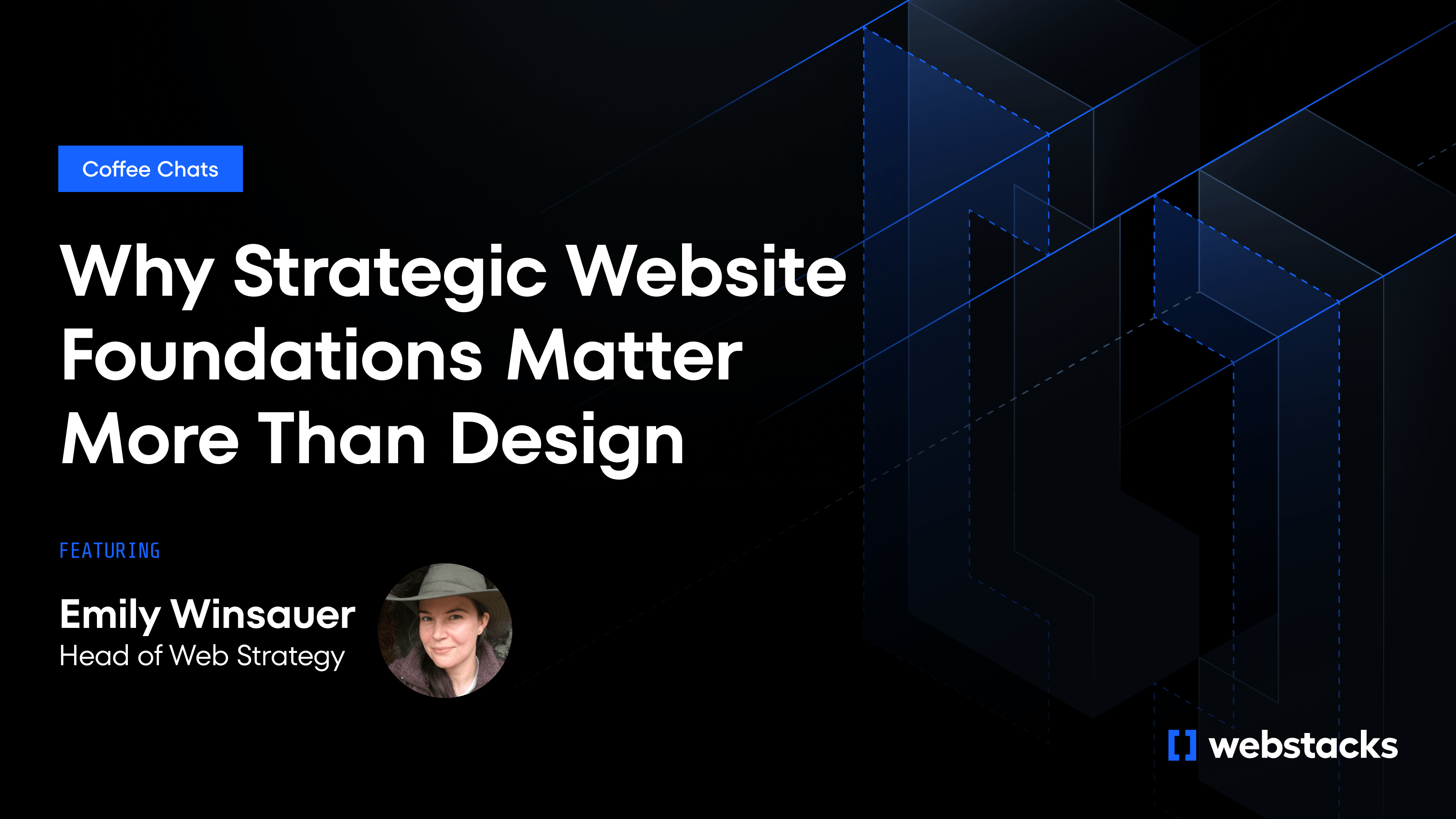B2B teams are under pressure to deliver personalized digital experiences—fast. But traditional monolithic frontend systems are rigid, slow to update, and create bottlenecks that hold back innovation. To stay competitive, companies are shifting toward a modular approach.
Composable frontend architecture offers that flexibility. It breaks your frontend into pieces that can be developed, deployed, and scaled separately.
In this article, you’ll learn about the key principles of composable frontend architecture and how to build it step by step. You’ll also see real examples from businesses already seeing results, and learn what to avoid when making the shift.

What Are the Key Principles of Composable Frontend Architecture?
A composable frontend architecture is built on foundational principles that deliver both technical and business advantages. Here are concepts that make this approach so powerful for modern web development.
Modularity and Micro-Frontends
A composable frontend architecture breaks everything down into discrete functional components. Think navigation menus, form elements, product displays, and more. Each becomes a micro-frontend, operating independently from the rest.
Micro-frontends split your app into smaller, independently deployable pieces. This lets you scale or update only what’s needed and speeds up deployments.
API-First and Headless by Design
In a composable frontend, everything communicates through APIs—from your CMS to data layers and various services.
The emphasis on APIs and headless design makes integration simpler. You can add new technologies as they emerge without being trapped by a monolithic system. Your composable frontend evolves alongside new technologies as they appear.
Team Autonomy and Faster Delivery
With a composable frontend architecture, different teams take ownership of specific modules. They can develop and update independently, creating parallel work streams and faster testing cycles.
The outcome is that new features and updates reach the market much faster. When teams work autonomously on their modules, they aren't held back by dependencies on other parts of the system. Your development process responds better to business needs and market changes.
How Composable Frontends Benefit B2B Teams
Composable frontend architecture offers benefits that are particularly valuable for B2B teams.
Faster Launch Cycles with Composable Frontends
Composable frontends speed up launch cycles dramatically. Marketing teams can publish landing pages and digital assets without waiting for development backlogs. Since you don't need full system redeployments for changes or additions, everything moves faster.
Better Cross-Team Collaboration
A composable frontend separates concerns, so development, design, and content teams can work in parallel. This breaks down traditional silos and removes the need for constant handoffs. Teams stay focused on their own areas of expertise while collaborating more efficiently across the stack.
Tailored Experiences at Scale
Personalized experiences give B2B companies a real edge. With a composable frontend, it’s easier to scale them across regions and segments. You can localize modules, tailor content, and add personalization without touching the entire system.
Avoiding Vendor Lock-In
Composable frontends let B2B teams choose the best tools for every part of the digital experience, whether it’s the CMS, analytics, search, or personalization. As needs evolve, you can swap out individual tools without overhauling your entire stack. The flexibility reduces vendor lock-in and keeps you ready for whatever comes next.
What Are the Core Components of a Composable Frontend?
Composable frontend architecture isn’t just a concept. It’s made up of parts that impact how your site runs, scales, and adapts to change.
Modular Build Systems and Deployment Pipelines
One of the first things that changes with a composable frontend is how things get built and shipped. Each module has its own build process and deployment pipeline. Updates don’t need to wait for a full-site deploy.
This modular approach to deployment reduces risk and accelerates iteration. Need to update the hero layout on a landing page? You can push that change independently, without worrying about what else is going live.
Smart Component Libraries
Design systems let teams reuse building blocks such as buttons, forms, and page sections. But without rules, it can quickly turn into a mess of one-off versions that are hard to maintain.
Good governance means setting clear standards: what each component does, how it’s used, and who can change it. It keeps the system lean and easy for everyone to work with.
Integration Logic and Middleware
Connecting services such as CRMs, analytics platforms, personalization engines, or localization tools isn’t always as simple as “plug and play.” A strong composable frontend includes middleware or orchestration layers that handle how data moves between modules and services.
This logic layer keeps everything in sync: content updates flow correctly, user data is shared across experiences, and edge cases don’t create bugs that slip through. Without it, your frontend becomes a collection of silos instead of a coherent product.
Content Modeling and Documentation Standards
Composable systems rely heavily on structured content, so everyone needs to understand what each component expects, how it connects to content, and what rules govern its use. To achieve this, you need to incorporate content modeling and documentation.
Whether you’re using Storybook, a headless CMS schema, or internal playbooks, every module should have clear contracts: inputs, outputs, usage guidelines, and design specs.

How to Build a Composable Frontend in Five Steps
Here's a practical roadmap to help you implement a composable frontend:
1. Audit Your Current Stack
Start by examining your existing frontend architecture. Look for tightly coupled or slow-to-update parts. Ask yourself:
- Which components change most often?
- Which ones need the most development resources?
- Which would benefit most from independent deployment?
This audit helps assess your system's integration complexity. You need to know if independently developed components can work well together in a composable frontend architecture.
2. Define Ownership and Domains
After identifying key components, assign clear ownership. Define boundaries and responsibilities for each module based on business function.
When different teams own specific modules, they can develop and update them independently.
3. Choose the Right Tools
Composable frontends give you the freedom to pick the best tools for each job. Start with a headless CMS to manage structured content, a frontend framework to build your UI, and an orchestration layer to handle how components and services talk to each other.
Look for tools with strong APIs, reliable hosting, and developer support. Next.js is a strong choice—it supports both static and server-side rendering, which makes it suited for modular architectures.
4. Set Up Your CI/CD Pipeline
Automate how each module gets built, tested, and deployed. With independent pipelines, you can update one part of the site without touching the rest.
Version control, automated tests, and rollback options should be built in so teams can ship confidently and fix issues fast.
5. Start Small and Expand
Don’t try to go composable all at once. Start with a single, high-impact module such as a landing page or feature section that’s easy to isolate from the rest of the site. Choose something that changes often and involves multiple teams.
Use this first module to pressure-test your component library, your content model, and how well your team collaborates in a modular setup. Watch for friction, including where documentation falls short or where governance is unclear.
As that first module stabilizes, reuse its patterns in other parts of the site. Expand to shared components such as headers or pricing tables that appear in multiple places.
Composable Frontend Use Cases in B2B
B2B teams are already seeing real results from composable frontend architecture. Here are a few examples that show how this approach helps companies move faster, scale smarter, and stay flexible.
Solana Foundation
Solana Foundation partnered with Webstacks to rebuild their website using a composable architecture powered by Builder.io. The migration away from Ghost and Sanity gave content editors more control, so they can update and publish content without relying on developers.
Webstacks also introduced a unified design system to bring consistency across pages and improved the site’s structure to support developers with clearer navigation and better access to documentation. As a result, Solana saw faster content workflows and a more intuitive developer experience.
ServiceTitan
ServiceTitan worked with Webstacks to overhaul its marketing site. They moved from HubSpot to a modern stack built on Gatsby.js and Contentful, which supported reusable components and a scalable content model.
The shift reduced time-to-market and allowed the site to grow alongside ServiceTitan’s content strategy.
iTrustCapital
iTrustCapital migrated from WordPress to a composable setup using Contentful and Gatsby. This shift improved page performance and gave marketing teams more control over publishing workflows. With a headless CMS and a streamlined deployment pipeline, they reduced their reliance on developers and built a system that can grow with the business.
Composable Frontends Are a B2B Advantage
Composable frontend architecture helps B2B teams move faster, stay flexible, and deliver better digital experiences. By breaking the frontend into independent parts, your teams can update and scale without slowing each other down.
But getting started takes the right strategy: clear ownership, a shared design system, and a thoughtful rollout. A web development partner like Webstacks can be of huge help. We have supported leading B2B brands in building and scaling composable frontends.
Get in touch with us to learn more about our approach and execution.




